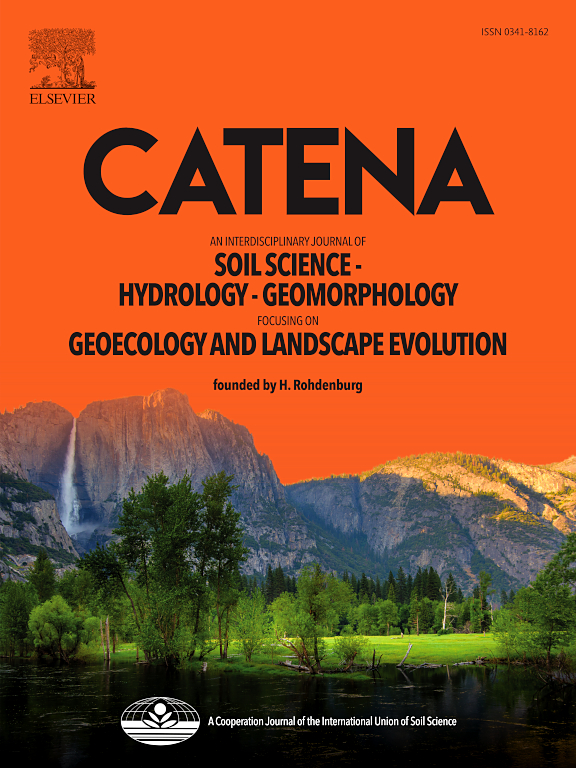Irrigation reshapes weathering and pedogenesis in calcareous soils of tropical dryland (NE Brazil)
IF 5.4
1区 农林科学
Q1 GEOSCIENCES, MULTIDISCIPLINARY
引用次数: 0
Abstract
Irrigation is crucial for improving crop productivity in dryland agricultural systems. As drylands are expected to expand due to future climate scenarios, understanding the effects of irrigation on soil properties for sustainable soil management is vital. In this context, our study investigates the impact of 23 years of irrigation on the soil morphology and mineralogy of a Eutric Calcaric Cambisol in the semi-arid region of Northeastern Brazil. Two soil profiles – one irrigated (IRR) and one non-irrigated (NIRR), located 40 m apart – were studied. Detailed mineralogical analyses, including thermogravimetric analysis and X-ray diffraction modeling, and micromorphological description of thin sections were conducted. Irrigation promoted an increase in proportion of smectite layers in the soil, as evidenced by the formation of a new mixed-layer clay phase (illite–smectite). This process was probably triggered by carbonate dissolution and subsequent cationic enrichment of the soil solution. As a result, there was an increase in soil cation exchange capacity (CEC), exchangeable sodium percentage (ESP), clay activity, and K+ and Ca2+ concentrations in IRR. Regarding soil micromorphology, irrigation induced changes in the relative c/f distribution, shifting from enaulic to porphyric. The granular and moderately developed subangular blocky structure shifted to a strongly developed subangular block structure with depth, while stipple-speckled fabrics changed to striated birefringent fabrics. Our results emphasize that an increase in irrigated croplands may reshape pedogenesis and soil fertility, consequently affecting soil functioning in these dryland soils.
灌溉改变了热带旱地(巴西东北部)钙质土壤的风化和成土过程
本文章由计算机程序翻译,如有差异,请以英文原文为准。
求助全文
约1分钟内获得全文
求助全文
来源期刊

Catena
环境科学-地球科学综合
CiteScore
10.50
自引率
9.70%
发文量
816
审稿时长
54 days
期刊介绍:
Catena publishes papers describing original field and laboratory investigations and reviews on geoecology and landscape evolution with emphasis on interdisciplinary aspects of soil science, hydrology and geomorphology. It aims to disseminate new knowledge and foster better understanding of the physical environment, of evolutionary sequences that have resulted in past and current landscapes, and of the natural processes that are likely to determine the fate of our terrestrial environment.
Papers within any one of the above topics are welcome provided they are of sufficiently wide interest and relevance.
 求助内容:
求助内容: 应助结果提醒方式:
应助结果提醒方式:


